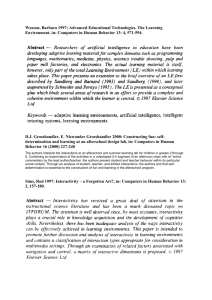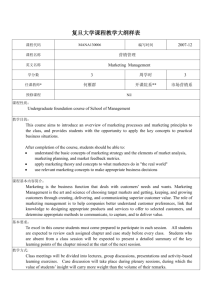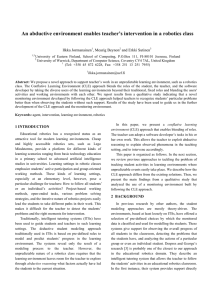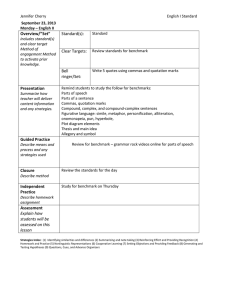“Designing Electronic Collaborative Learning Environments
advertisement
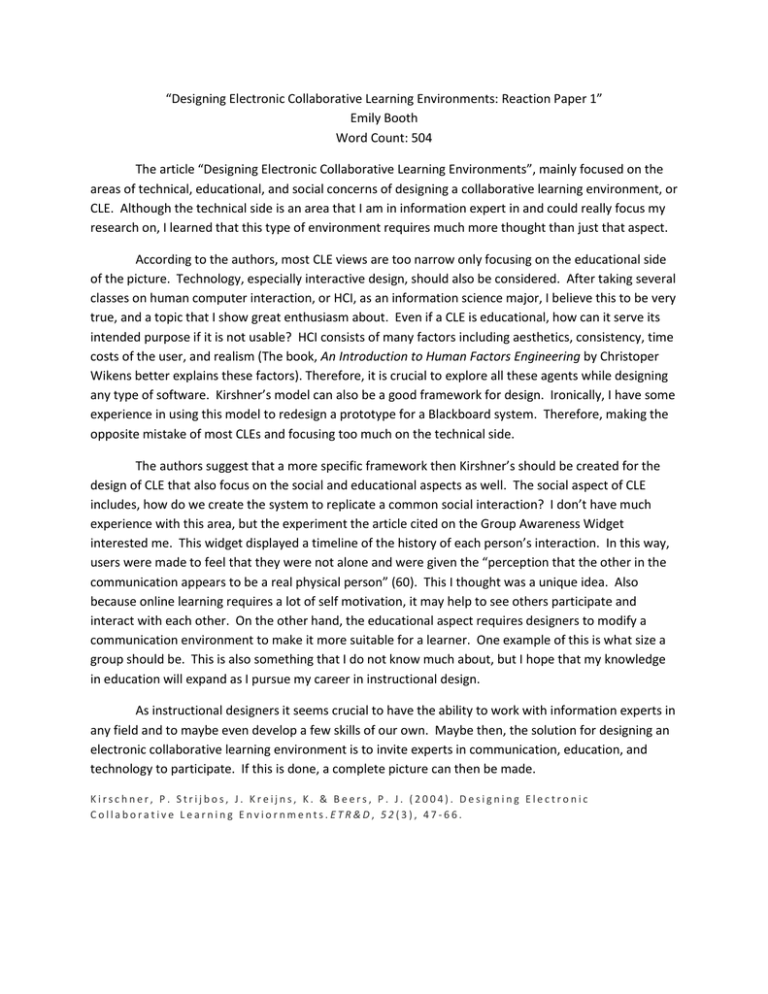
“Designing Electronic Collaborative Learning Environments: Reaction Paper 1” Emily Booth Word Count: 504 The article “Designing Electronic Collaborative Learning Environments”, mainly focused on the areas of technical, educational, and social concerns of designing a collaborative learning environment, or CLE. Although the technical side is an area that I am in information expert in and could really focus my research on, I learned that this type of environment requires much more thought than just that aspect. According to the authors, most CLE views are too narrow only focusing on the educational side of the picture. Technology, especially interactive design, should also be considered. After taking several classes on human computer interaction, or HCI, as an information science major, I believe this to be very true, and a topic that I show great enthusiasm about. Even if a CLE is educational, how can it serve its intended purpose if it is not usable? HCI consists of many factors including aesthetics, consistency, time costs of the user, and realism (The book, An Introduction to Human Factors Engineering by Christoper Wikens better explains these factors). Therefore, it is crucial to explore all these agents while designing any type of software. Kirshner’s model can also be a good framework for design. Ironically, I have some experience in using this model to redesign a prototype for a Blackboard system. Therefore, making the opposite mistake of most CLEs and focusing too much on the technical side. The authors suggest that a more specific framework then Kirshner’s should be created for the design of CLE that also focus on the social and educational aspects as well. The social aspect of CLE includes, how do we create the system to replicate a common social interaction? I don’t have much experience with this area, but the experiment the article cited on the Group Awareness Widget interested me. This widget displayed a timeline of the history of each person’s interaction. In this way, users were made to feel that they were not alone and were given the “perception that the other in the communication appears to be a real physical person” (60). This I thought was a unique idea. Also because online learning requires a lot of self motivation, it may help to see others participate and interact with each other. On the other hand, the educational aspect requires designers to modify a communication environment to make it more suitable for a learner. One example of this is what size a group should be. This is also something that I do not know much about, but I hope that my knowledge in education will expand as I pursue my career in instructional design. As instructional designers it seems crucial to have the ability to work with information experts in any field and to maybe even develop a few skills of our own. Maybe then, the solution for designing an electronic collaborative learning environment is to invite experts in communication, education, and technology to participate. If this is done, a complete picture can then be made. Kirschner, P. Strijbos, J. Kreijns, K. & Beers, P. J. (2004). Designing Electronic Collaborative Learning Enviornments.ETR&D, 52(3), 47-66.

